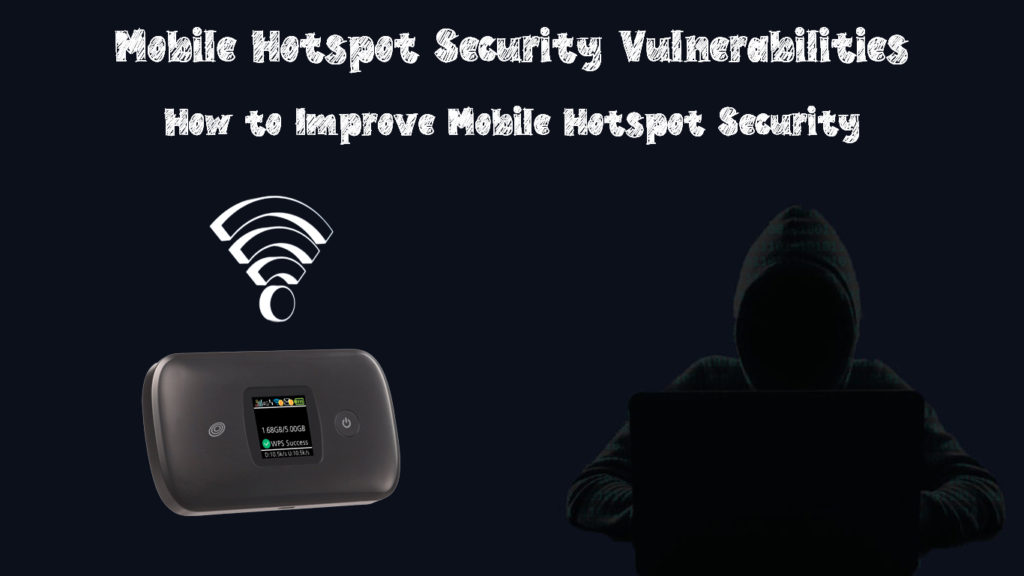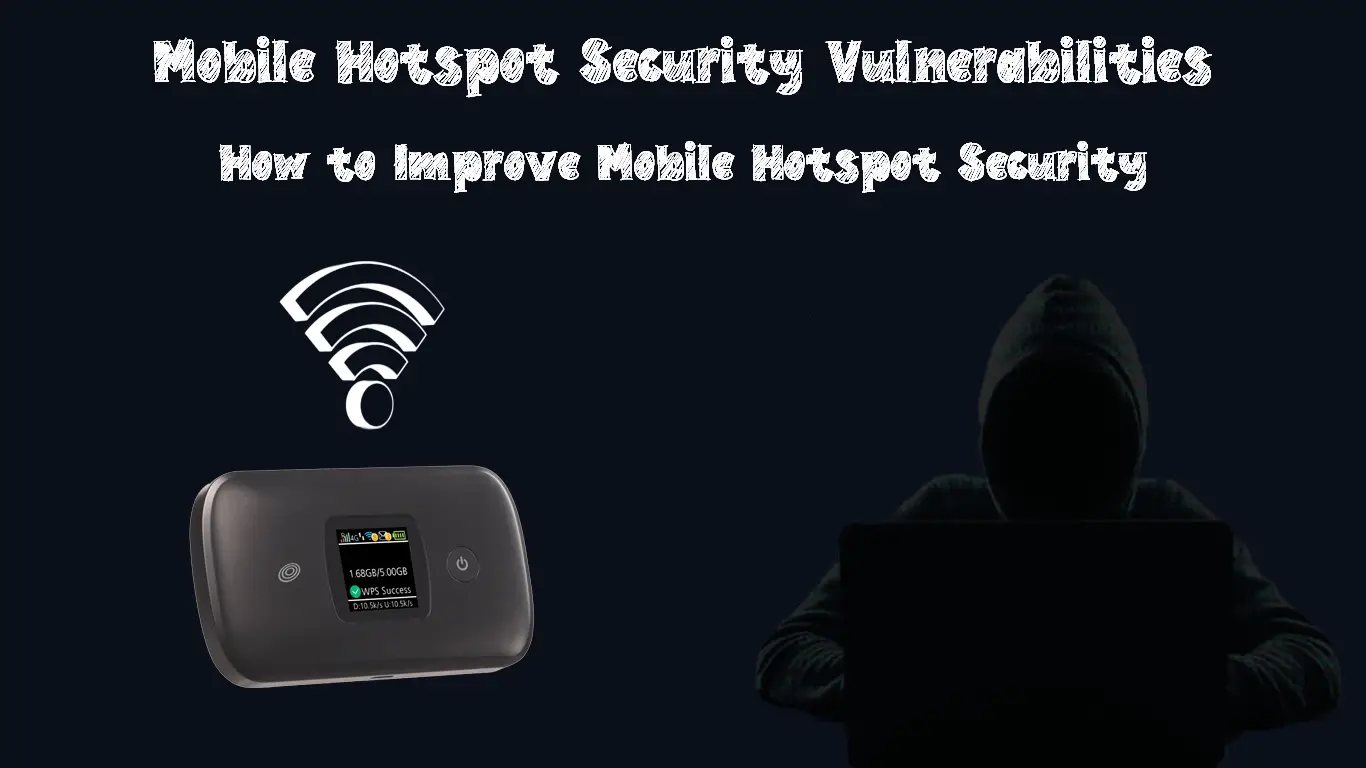A mobile hotspot is a MiFi device that uses a SIM card and cellular data to create a Wi-Fi network. The hotspot feature is also readily available in smartphones, allowing other devices to connect to the ad-hoc Wi-Fi network created by the phone.
When you turn on this feature, other devices will readily connect to your hotspot device to access the internet. However, you will need enough cellular data on your smartphone and a network security key that other devices will use.
Although the network security key secures the network, the hotspot is still open to many other vulnerabilities, as you will see in this article.

CONTENTS
Challenges and Vulnerabilities Facing a Mobile Hotspot
The internet is beneficial for personal, corporate, and entertainment, among many other uses. However, connecting to the internet brings dangers and risks.
Hotspots come in handy, especially if you are traveling or need a backup when using an unreliable Wi-Fi network. With 4G and 5G networks, you can create a hotspot with up to 10 connected devices.
Some users use their smartphones as a hotspot, while others prefer using a portable device that network providers offer. Using a portable hotspot device has a few advantages over using your mobile phone as a hotspot:
- Your smartphone carries a lot of personal data which can be accessed by hackers
- Your smartphone drains a lot of battery when the hotspot feature is enabled
- Several changes in the smartphone’s hotspot feature cause new threats due to the inability to manage other connecting devices
Investing in an excellent portable hotspot device is the best option if you rely on a hotspot often. Additionally, some network service carriers offer affordable data plans that include extra data for hotspots only, although it is uncommon.
Creating a hotspot allows multiple devices, such as laptops and mobile phones, to connect to your device. People with malicious intent may take advantage of this, attack an unsecure hotspot network, and cause damage.
Some of the methods that hackers use to access a hotspot network may include:
Fake Hotspot Networks
Hackers can create a hotspot network similar to your hotspot. They can intentionally place the hotspot near the original to ensure it attracts more devices.
Sometimes, the hackers may not use a network security key and pretend to be an open hotspot in the vicinity. Therefore, if you are not keen, you will accidentally connect to the malicious network instead of your network.
Once these devices connect, hackers can spread malicious content such as viruses through the network. The devices will now be vulnerable to attacks where the attackers can obtain as much information as they need.
Session Hijacking
Here, the hacker will access the network and wait for you to log into any of your online accounts. Once you log out, the hacker will still use your session tokens, known as cookies, to obtain access.
The hacker will now gain control of the account, which may also include your online banking accounts.
Worms
Worms are harmful programs hackers spread through the network to devices connecting to the hotspot. Devices without security credentials are mainly victims of malicious programs.
The main purpose of these programs is to lower the device’s performance, making it susceptible to attacks and hacking.
Man in the Middle
The attackers can use several means to steal and use personal data from other users within the hotspot networks. They can sneak into networks through back-end methods or successfully intercept data traffic in the network.
Once they control the network and data traffic, they will monitor all activities. They may even follow up on all the transactions you made using your device through online banking.
Hackers who access such information will obtain personal data to scam you, blackmail you, or steal your identity. Most of the time, users have no idea that such malicious activities are ongoing in their networks and devices.
Therefore, you must proceed cautiously while setting up or connecting to a mobile hotspot. Always strive to secure your data and network from cyberattacks to avoid personal data from falling into the wrong hands.
Ensure you have the correct network name and password before connecting your device to the hotspot. Avoid hotspots without network security keys since they are full of hackers waiting to spread malicious content.
What Is Man in the Middle?
How to Protect Your Mobile Hotspot Network
You can take measures to protect your network and devices from new threats that may arise every day. Thus, your network and the connecting devices will be safe and secure from hackers who prey on unsuspecting users.
Some of the measures you could take include:
Change the SSID of Your Hotspot Network
Many hackers create fake hotspots to trap users copy original networks with common names, making them easier to clone. Create your unique SSID and avoid words in the dictionary, or mix different characters with numbers.
Create Strong Passwords and Change them Often
A strong network security key will further protect since hackers will not easily clone the password. A strong password has about 8 to 12 characters, made of random characters and numbers.
Additionally, you can use a password generator that creates a unique set of characters for your security key. Even when using the generator, switching or adding a few characters is possible to make it very special.
Recommended reading: LiftMaster Wi-Fi Set Up (LiftMaster Garage Door Opener Wi-Fi Setup Guide)
The passwords you use for your different accounts, such as social media accounts, should differ. That way, you will keep hackers away from your network and your devices.
Be careful when sharing your password, and do not give it out too often. Using a password will significantly limit the number of devices with access to your network.
It is advisable to change the SSID and password of your hotspot often, especially if you are in public places. To change your hotspot’s SSID and password on your smartphone, use the following steps:
- Go to the Settings menu and select the Connections option
- Select the Mobile Hotspot and Tethering option to turn on the hotspot feature
- Select the Mobile Hotspot option and configure your settings
Use Strong Encryption, Firewall, and VPN.
There are different types of encryption that your mobile hotspot uses to protect your data. The security is usually on by default, with WPA 2-PSK being the most common in many devices.
The outdated version is the WEP standard, which uses static encryption codes for encryption and is easily hackable. WPA standards use dynamic encryption codes with more complex and unique verification processes, offering a more secure network.
Additionally, firewalls and a secure VPN will provide more network security by using further data encryption within the network. You can control and block malicious content from accessing your data while using firewalls; hence, ensure you enable them.
Also, regularly updating your smartphone improves its security packages since the manufacturer will upgrade the software. Therefore, updating your phone will provide better security to your network.
Visit Websites that have HTTPS and SSL Port Protocols
Visiting sites on the internet allows the flow of data from the server to the receiver. Websites with HTTPS and SSL protocols will secure your data since they have end-to-end encryption.
Therefore, even if the hacker has access to your network, the data encryption will make it hard to hack. Accessing insecure websites makes your devices and network vulnerable to cyberattacks since they have minimal encryption.
Conclusion
Mobile hotspots are a great way to access the internet, especially in public areas away from traditional Wi-Fi networks. The hotspot feature is readily available on your smartphone, or you can use a portable hotspot device.
However, creating a network poses a risk to the network and devices since they are susceptible to cyberattacks. Hackers can intercept the network traffic to steal data from the devices or spread malicious programs.
Therefore, it is necessary to take the appropriate measures to ensure the security and safety of your data.

Hey, I’m Jeremy Clifford. I hold a bachelor’s degree in information systems, and I’m a certified network specialist. I worked for several internet providers in LA, San Francisco, Sacramento, and Seattle over the past 21 years.
I worked as a customer service operator, field technician, network engineer, and network specialist. During my career in networking, I’ve come across numerous modems, gateways, routers, and other networking hardware. I’ve installed network equipment, fixed it, designed and administrated networks, etc.
Networking is my passion, and I’m eager to share everything I know with you. On this website, you can read my modem and router reviews, as well as various how-to guides designed to help you solve your network problems. I want to liberate you from the fear that most users feel when they have to deal with modem and router settings.
My favorite free-time activities are gaming, movie-watching, and cooking. I also enjoy fishing, although I’m not good at it. What I’m good at is annoying David when we are fishing together. Apparently, you’re not supposed to talk or laugh while fishing – it scares the fishes.

